When I was 13 or 14 my dad was in jail. I don’t know exactly how long, because at the time I lived about a thousand miles away from him and the rest of my nuclear family. I don’t remember who told me or how I found out, but I wasn’t a fan of this fact. I probably didn’t get to talk to him on the phone?
I was on the school baseball team during this whole thing and I remember we played a game in the rain. I remember hitting the ball and thinking about how upset I was about this whole situation, but also because it was raining the bat slipped out of my hand and I ended up throwing the bat. You can’t do that, they frown upon it, I think it canceled out the hit.
I remember being really upset and my friend Ian Farnham saying, “What’s the problem, you can’t throw the bat” and all I could say was “My dad’s in jail!”
From this point on nearly all the work I did, on the bench or otherwise, was done using the undercarriage. With the old Japanese Sawhorses the benchtop would slide around at times, but that doesn’t happen thanks to four dowels holding the benchtop in place.
At this point I’d been doing woodworking of some form or another without a vise. The Moravian Bench calls for a leg vise and a wooden screw. I opted to skip the (expensive) wood screw and just go with a cheap Yost on Amazon. I had actually originally wanted to make my own wooden screw, but the length was intimidating, I couldn’t find tools to make screws as large as the plans call for, and as much fun as I was having, I was sorta ready to just have a bench, rather than add another side quest.
The leg vise has three major components:
The rear, which the screw connects to
The chop, which is what actually holds work against the bench
The parallel guide, which mates with the rear
I first built the rear out of some scrap hard maple laminated with a few inches of other softwood scrap. I am not sure that I needed all the depth I got but the maple was only two inches deep and that seemed a little low. The rear piece fits into slots you cut in the top of the front long stretcher and the bottom of the benchtop. The rear piece abuts the front left leg, which is at an angle. This was tricky to get to mate nicely, but once it’s in place it is solid as a rock.
Here are a couple of videos of me working on the rear of the vise. The first is me planing the right side nice and flat.
This second video is me chopping waste for one of the tenons (could be top or bottom, I don’t remember) in the rear of the vise. Chopping out waste is so cathartic.
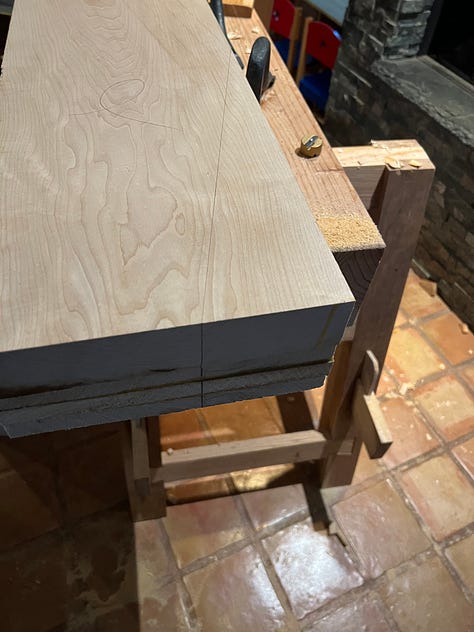
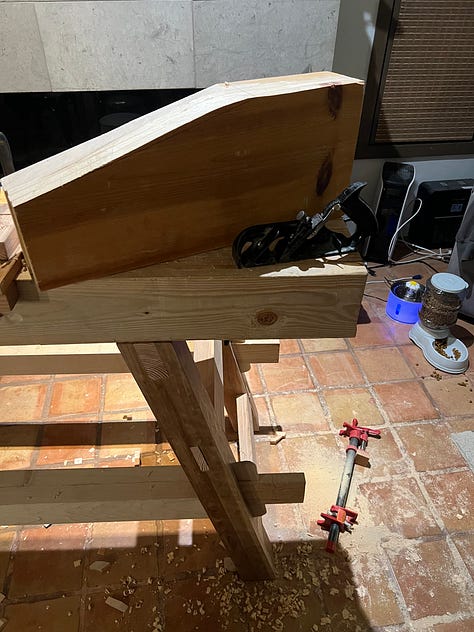
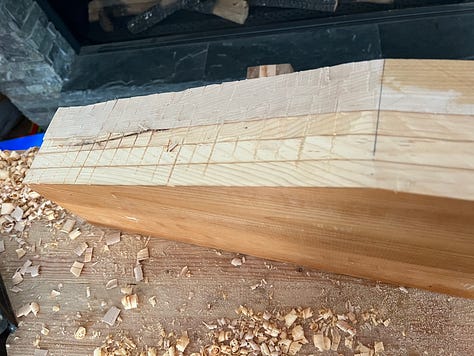
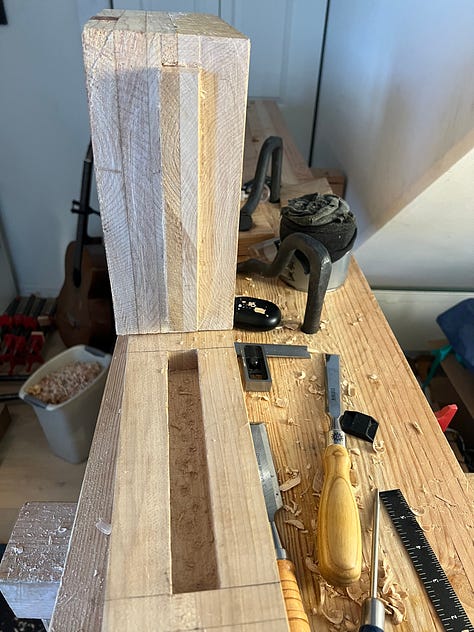


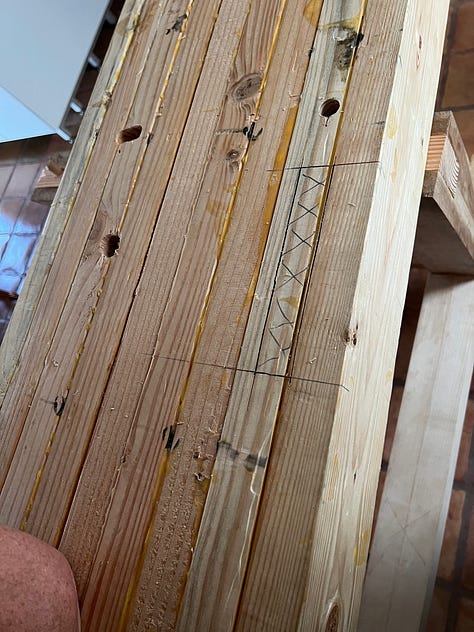

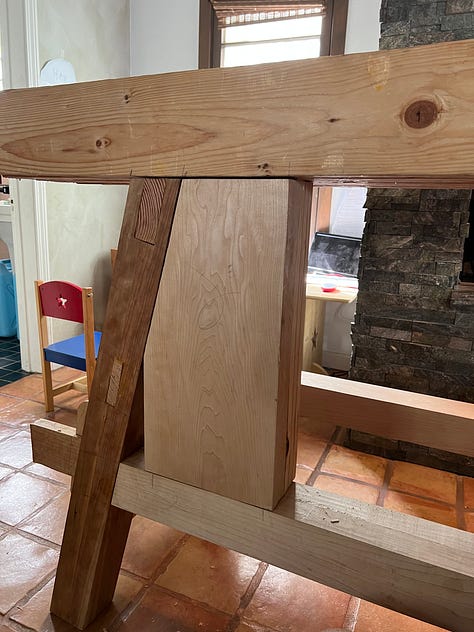
Test fit with the rear of the vise
Next I made the chop, mostly following the template suggested by Will Myers in his video. I sawed relief cuts and used a mallet and a chisel to quickly waste away the sides. If I were to do it again I’d use a hatchet, but I didn’t have a hatchet at the time. Much of the rest of the work on this piece is rasp and file work to get sides nice and smooth.
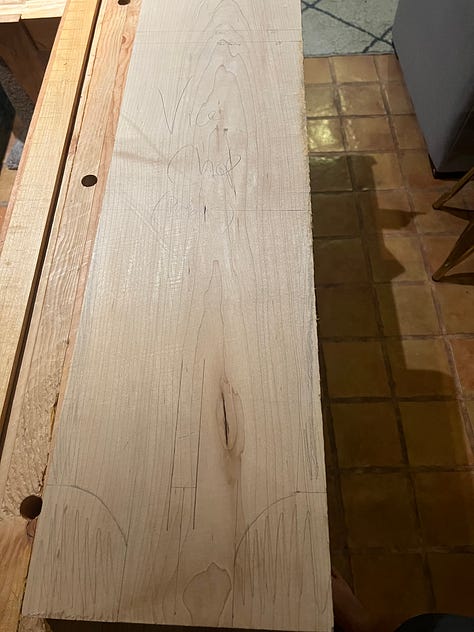
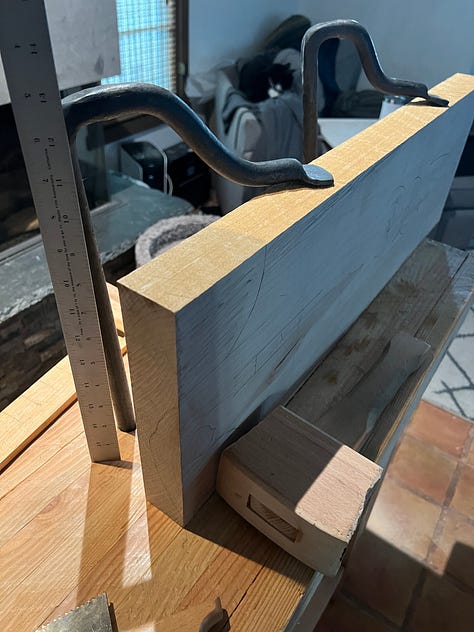
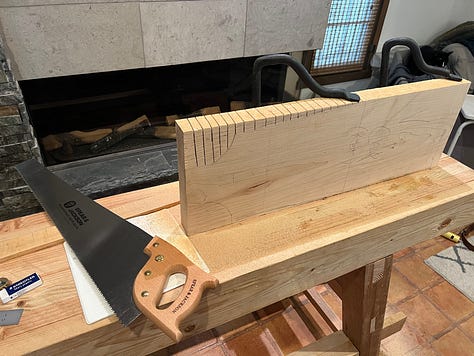
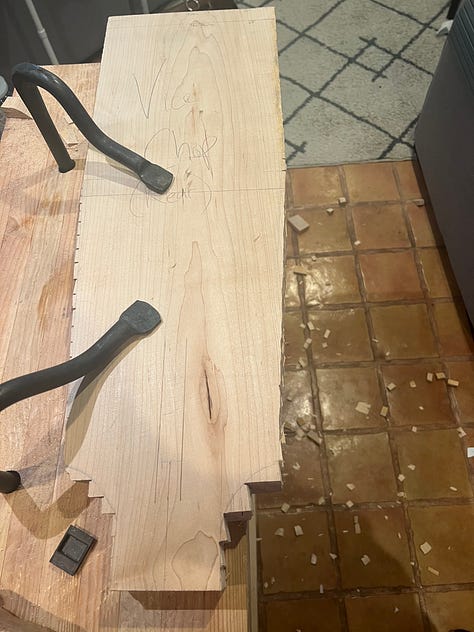
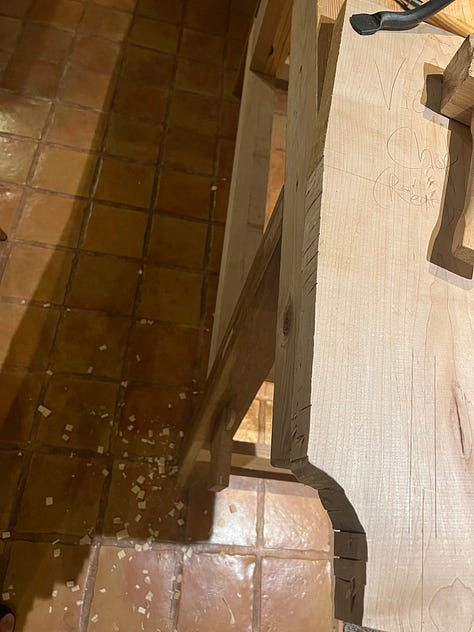
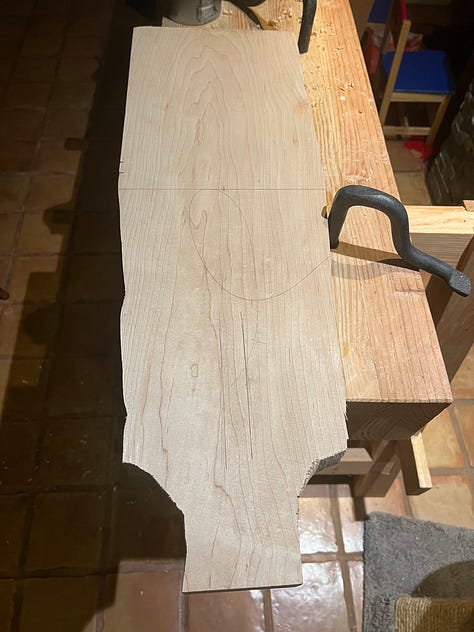
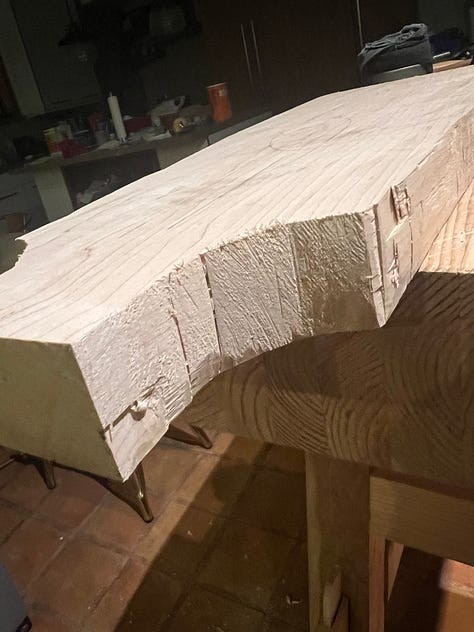
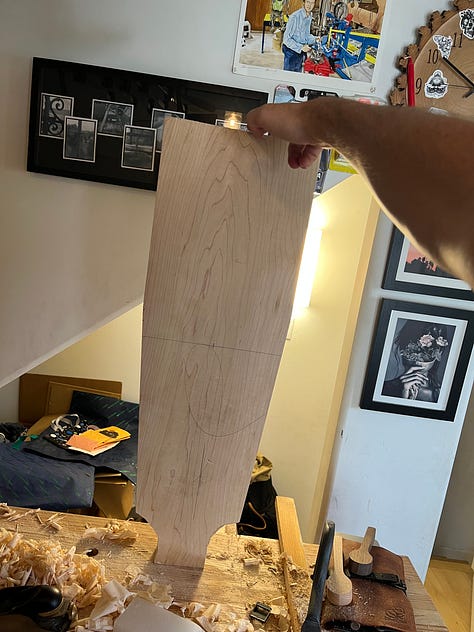
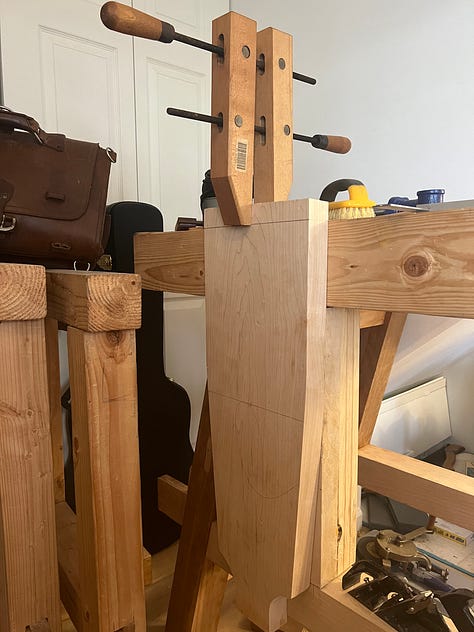
The last detail is to make the parallel guide. If you simply put a vise screw in a chop and start clamping, the chop will rack (this means it will be at an angle other than 90 degrees) and eventually this will wear out the vise screw, and you often end up with worse clamping because the surface area is reduced by the angle of the chop. To resolve this you have a parallel guide that ensures the other side (the bottom) of the chop remains parallel. I used some scrap red oak for this. This is one of the simplest pieces to make, you just plane it and make sure it’s pretty square, and then bore a bunch of holes.
After making the parallel guide you need to cut a slot in the rear piece for it to mate with, chop a mortise in the chop, and wedge and glue the guide into the chop. This was the first time I’d made wedges and it went splendidly. I did make a mistake here that will likely eventually force me to make a new chop: it’s pretty critical that the parallel guide be perpendicular to the vise. Mine is really close, but it’s off by a degree or two side to side. This ends up meaning the right side of my vise closes before the left side does. This will wear out the vise over time and it also means I end up clamping things in the right side rather than the middle, which I think adds to the wear and reduces over all clamping strength. Don’t make this mistake! It really needs to be dead square.
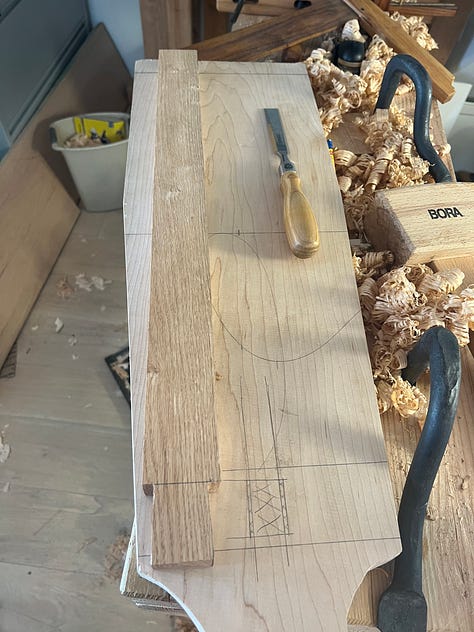
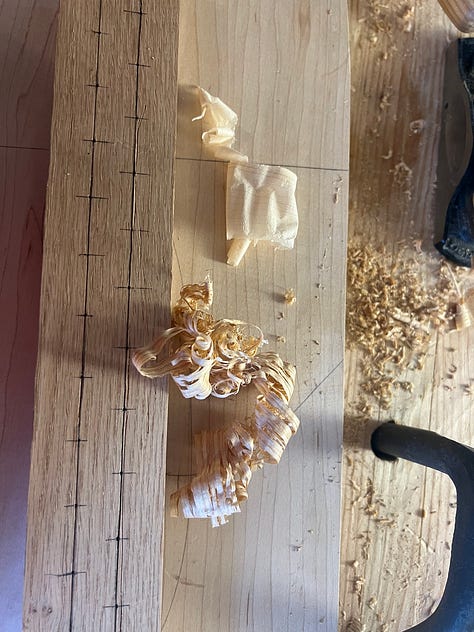
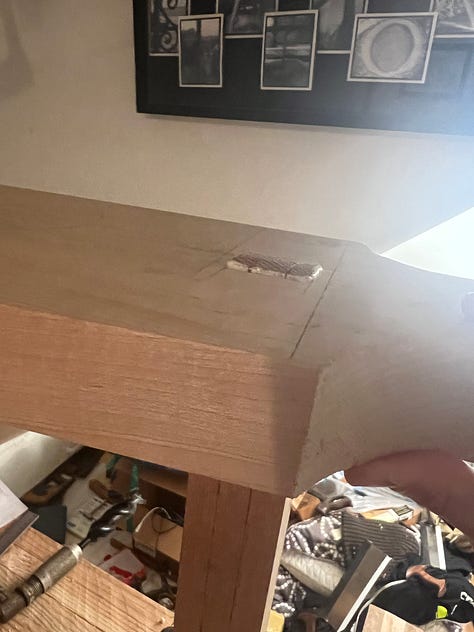
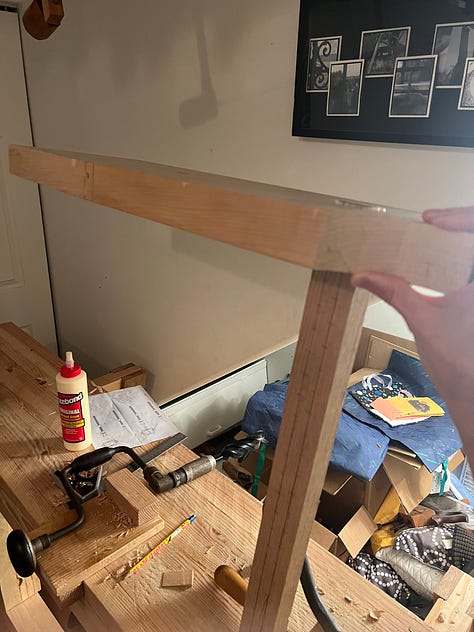
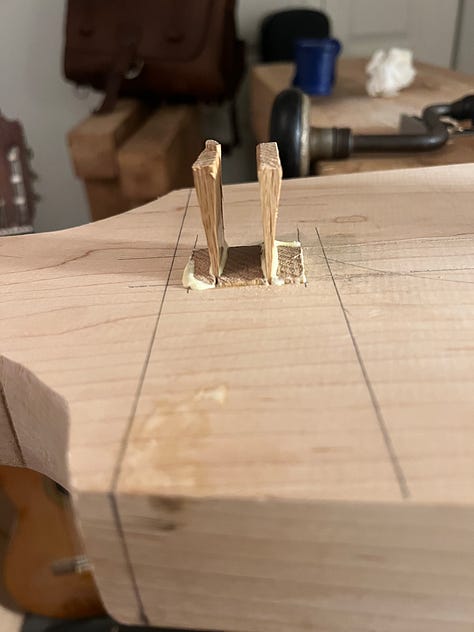
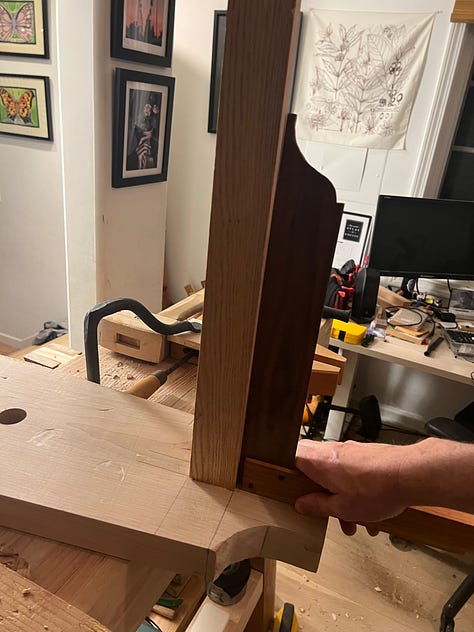

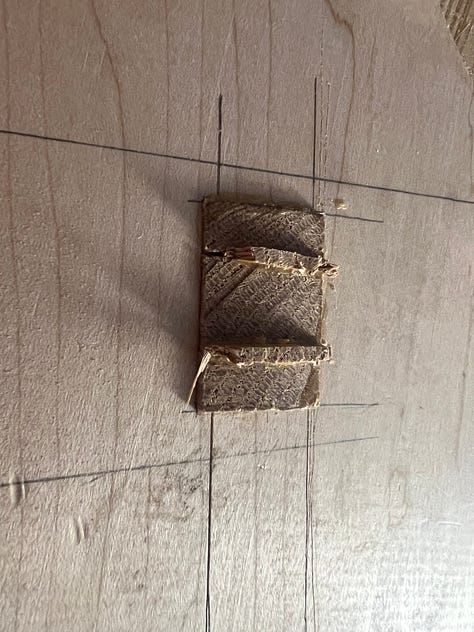

I bored the hole in the rear of the vise and screwed the machined rear of the metal screw into the back of the rear vise. I didn’t get this perfectly centered so there’s a little bit of metal rubbing wood, but after just a little bit of use that wore down such that it feels fine.
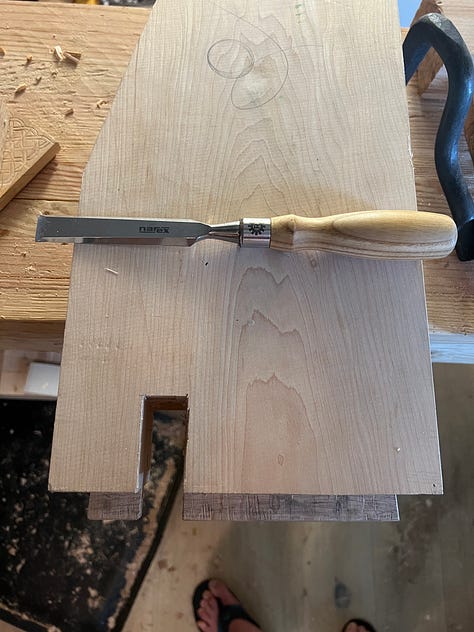


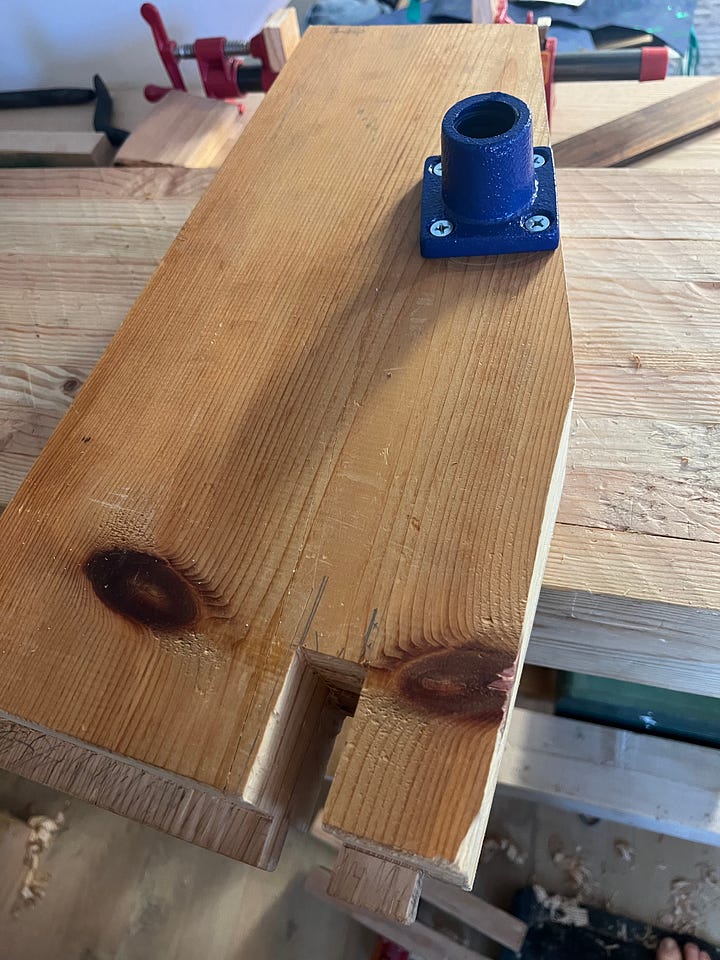
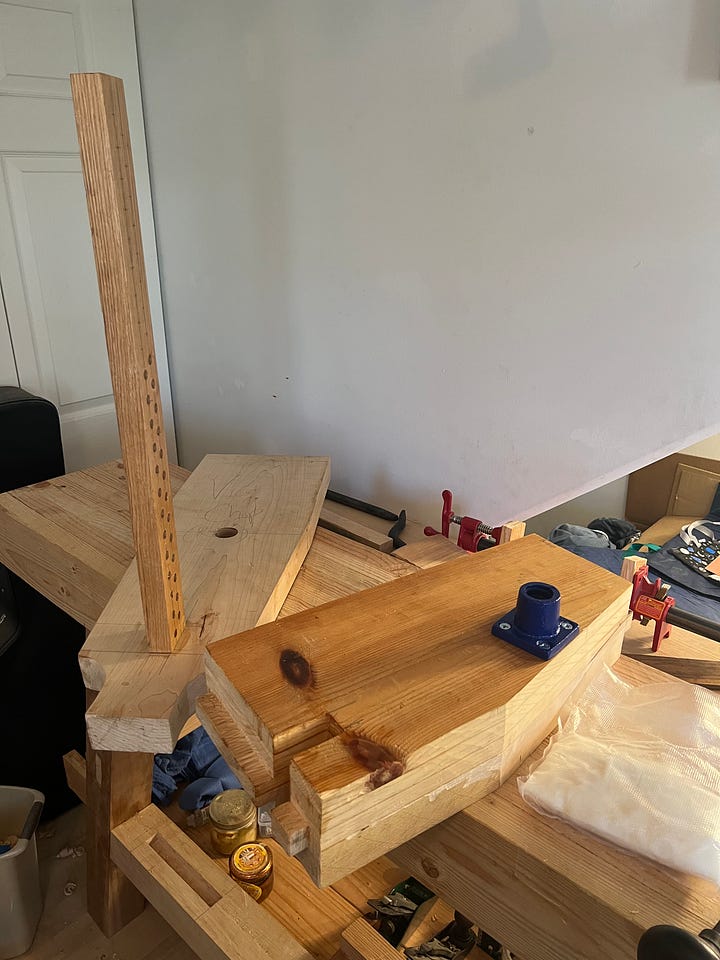
While testing things out and getting it initially functioning I used a pipe from one of my pipe clamps as the bar, but it was loud and cold and lifeless. I made an oak handle about 18” long (using the vise to hold said handle!) and used little oak pins in each side to hold it in place. I have already remade these pins once to make them fit more snugly so they won’t fall out.

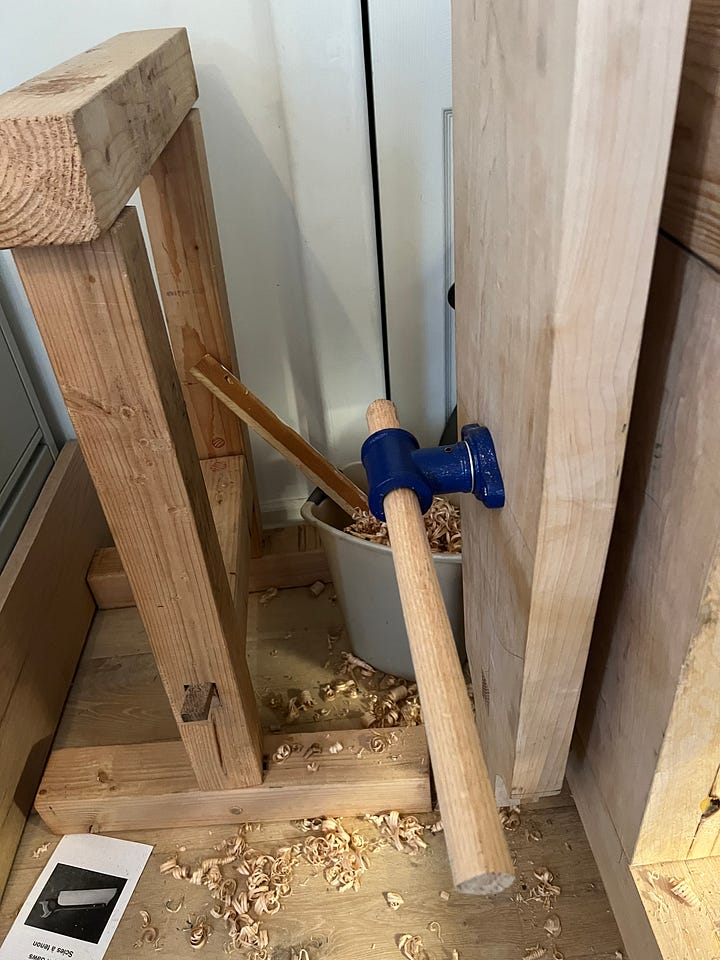
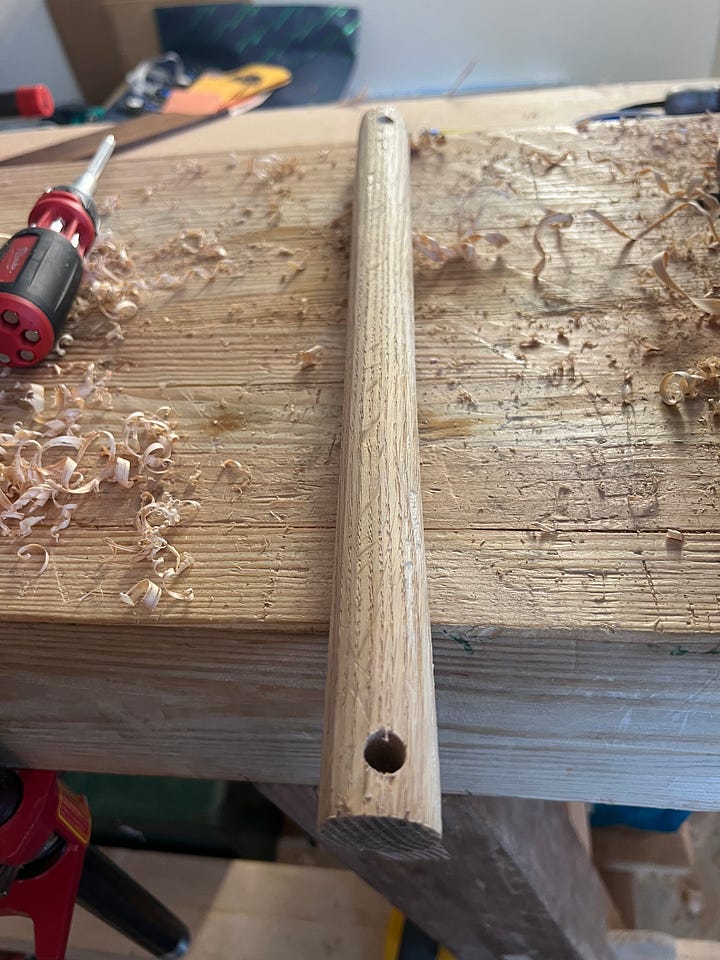
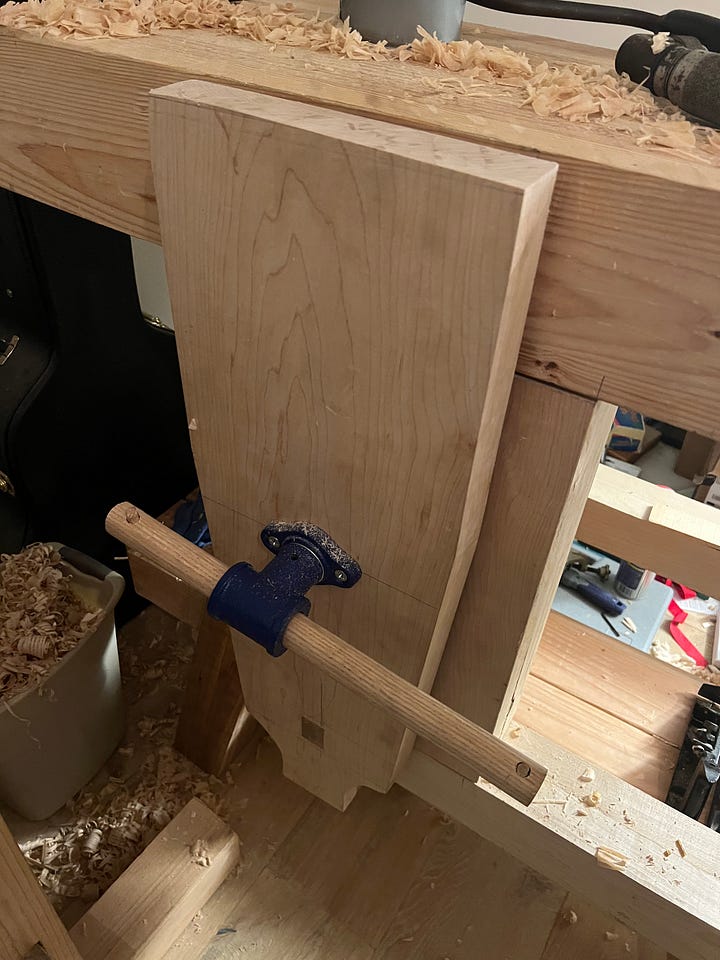
There were a few last bits to do like crosscut the top of the chop to match with the benchtop, do some rasp and file work on the chop to curve the top rather than leave it square, add chamfers, add some crubber (which I messed up a bit as well, I ended up getting a bunch of epoxy in the screw, but thankfully the rear of the vise is so deep that it doesn’t matter, those threads never get engaged.)
Due to the mistake with the parallel guide the vise doesn’t move as smoothly as it should, but it works well and having it really speeds up everything I do, just like having the undercarriage helps with planing and chopping.
I guess one other thing, which is not as much a vise problem as a problem with a Moravian Bench design, is that if you clamp something at an angle (imagine clamping a soon-to-be leg with the corners touching the benchtop and the vise,) if you overclamp the workpiece, the benchtop will literally lift off of the legs due to the angled forces. I think probably this means I need some kind of cradle to hold this kind of work but it is an annoying thing that has happened more than once.
Later, my dad told me about when he was in jail. During days they’d take him places to rake leaves, pick up trash, and do other kinds of community service. This was not a state prison my friends. He would be dropped off to do his work and then the jailors would just drive off. He waited a bit, and then he’d run back to his house. When he got there he would take a nice shower. He’d toast some bread and slather it with butter and jam. After he was nice and refreshed, he’d run back to where they’d dropped him off.
Maybe he didn’t run, maybe he just ambled?





